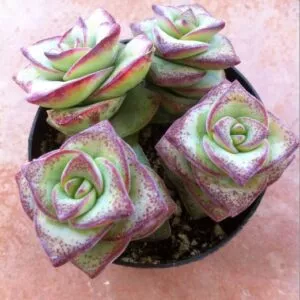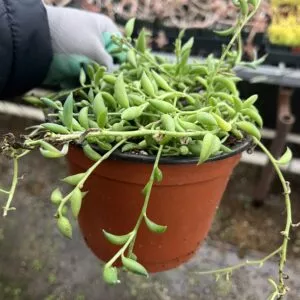Table of Contents
What a mesmerizing name Flaming Katy, and the plant does justice to its name, don’t you agree? With those vibrant blooms in pink with shiny white and deep green leaves, it is one spectacular succulent plant that will intrigue anyone.
So, if you want to add a pop of color to your living space, we highly recommend investing your time in the Kalanchoe blossfeldiana.
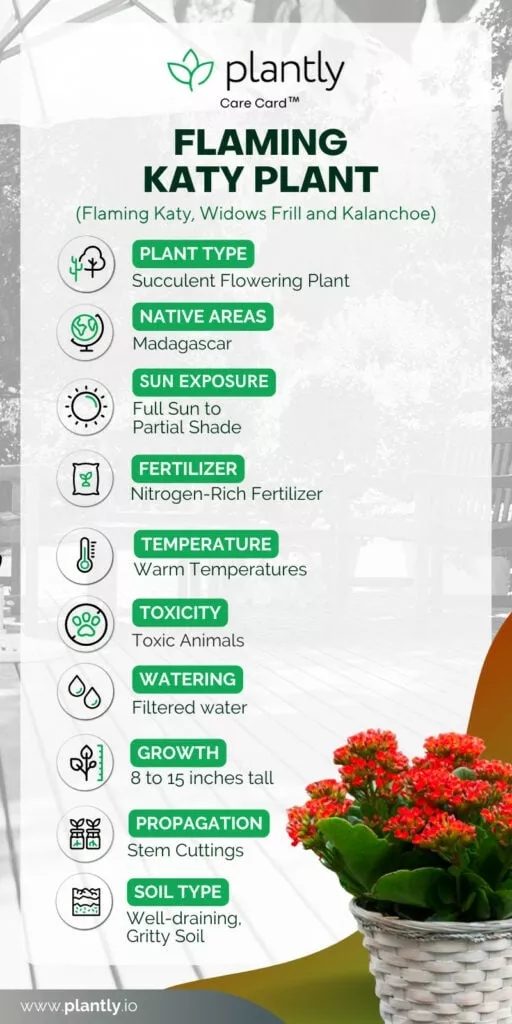
Flaming Kalanchoe Plant Care

The Flaming Katy also goes by other names, like Kalanchoe and Widow’s Thrill. The succulent plants come from Madagascar and are bright flowering plants. The fact is that Flaming Katy has different varieties with other common names making things very confusing for plant parents.
Still, the Flaming Katy plant care remains the same with all the species.
The Type of Soil That Flaming Katy Needs
Do you want the most vibrant color flower buds on your Flaming Katy? Then it helps to have the right soil mix for her to grow. The general rule for most succulents is a well-draining soil with a gritty texture to grow well.
Luckily, you can find a cactus or succulent potting soil at the local nursery. But if you cannot get your hands on it, we have an easy recipe you can use. The DIY potting mix is two parts sand, two parts regular potting soil, one part organic compost, and one part perlite.
Let us tell you a secret organic matter is a must as it provides enough nutrients for those gorgeous flower stems with lively colors to come alive.
Light Requirement for Flaming Katy
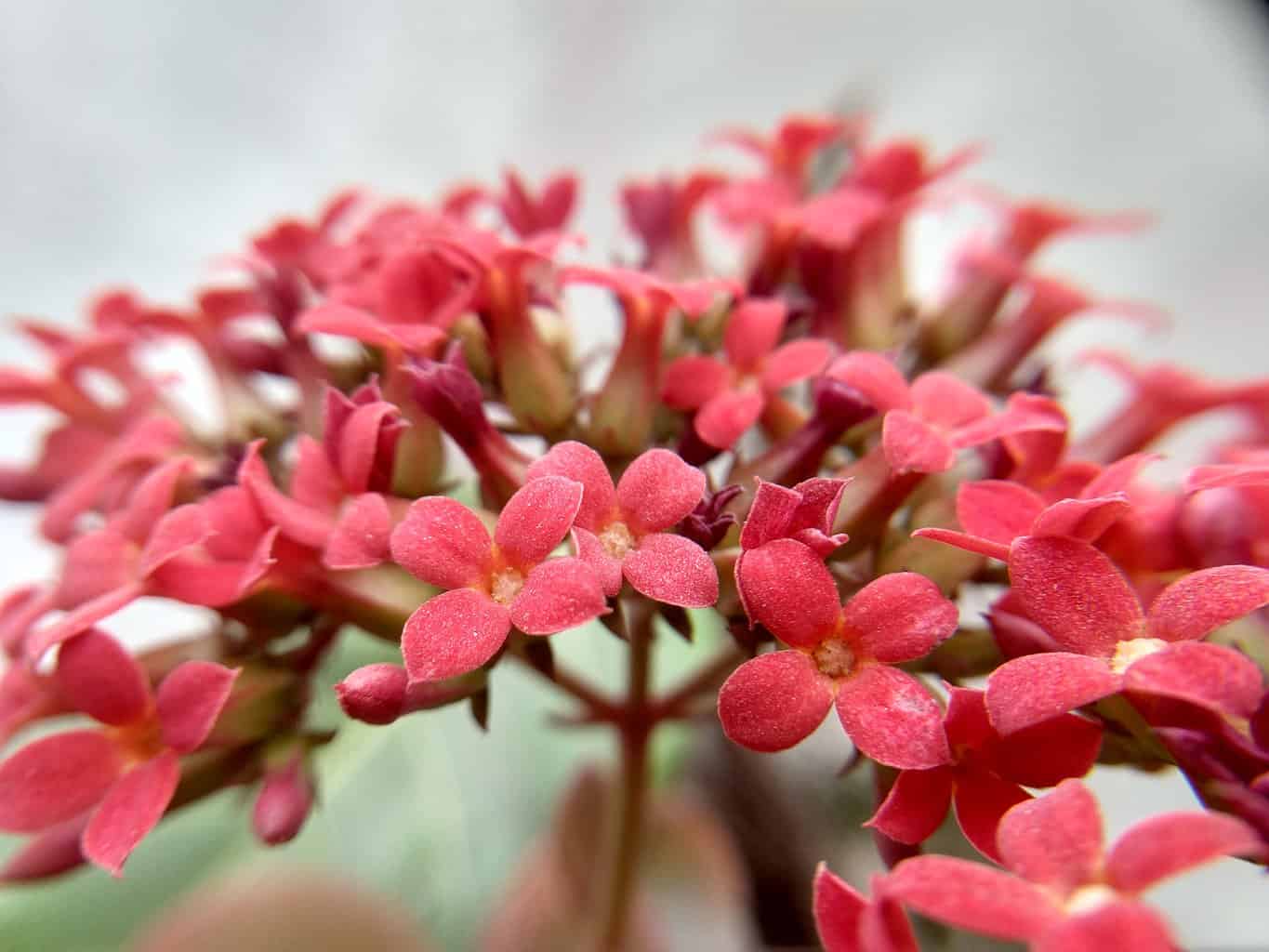
It needs the right light to bring the best out of your Kalanchoe blossfeldiana. If you have a variegated tricolor, they rarely bloom and need bright light daily. Still, sadly too much direct sunlight can harm those gorgeous leaves as it burns the edges and prevents blooming.
During summer, we recommend protecting your Flaming Katy from the full sun and providing her with some bright indirect light. The same applies if she does not receive enough light, as she will deteriorate with time.
The Flaming Katy plants become long and leggy as it tries to reach some light.
How To Water Flaming Katy Plants
For a good water schedule, it helps to consistently check your Flaming Katy if you want her to bloom. Flaming Katy Kalanchoe blossfeldiana is a forgiving plant when you accidentally forget to water it. Kalanchoe plants prefer under to overwatering.
The reason is that your plant stores water in the leaves for weeks. So, the best is to water the soil once completely dry and then water it well. You may need to water in summer once a week and in winter less.
Fertilizer Needs
For your Flaming Katy houseplant, it helps provide a nitrogen-rich fertilizer to boost growth. But for vivid yet longer-lasting Flaming Katy flowers, use a feed high in phosphorus to get the job done. Still, the Katy plant is not a big feeder, and too much feed can lead to nutrient toxicity from over-fertilizing resulting in burned roots.
Temperature and Humidity Levels

The best time that your Kalanchoe blossfeldiana Flaming Katy grows is in summer. The
temperature with the right amount of sunlight is ideal for growth. Yet, when the temperatures drop, we recommend taking special care of your plant.
The best is to bring the plant indoors and keep it in a warm, comfortable spot away from drafts or cold windows. The best part is that your Flaming Katy does not need high humidity compared to other plants like tropical plants.
If the moisture is too high, like during the rainy season, and there is no air ventilation, it can result in mold infections like stem or root rot. The same happens with too much watering.
Maintaining Flaming Katy’s Flowers

The foliage of Flaming Katy Kalanchoe is glossy and textured with tricolor boasting variegated leaves with pink leaf edges. The growing season is spring and summer, while winter provides a dormant period.
Yet, when it comes to indoor gardening, plant growth is slow. So, a small to medium-sized terracotta pot with ample drainage holes is perfect. In addition, the clay pots provide aeration, keeping your plant protected from root rot.
While pruning does not do much for succulents, it is not the case with your Flaming Katy plants. For example, pin each stem’s top before the flowering period. Doing this stimulates flowering, resulting in better blooms.
The same applies to removing any dead matter to reduce fungal disease. Furthermore, when your plant flowers, it helps to place your Flaming Katy in a cooler spot with warm heat and bright light. After the blooms fade, you can remove dead flowers or deadhead spent flowers.
Propagation of Flaming Katy Kalanchoe Plants
When you do it at the right time, propagating your Flaming Katy is a breeze. You can take stem cuttings with a sterilized pruner during spring or summer. Then place your cutting in moist, succulent soil or a sandy mix.
Place it in a warm spot out of direct sunlight keeping it in moderate light, and it should take up to a few weeks to root and see a new plant growing. Another great way is to remove the baby plants near the mother plant’s base.
The suckers grow a root system after sprouting, and you can remove them to develop new plants.
Flaming Katy Varieties
The Flaming Katy has different common names, even the Christmas Kalanchoe. There are different varieties you can grow that include these favorites.
Calandiva
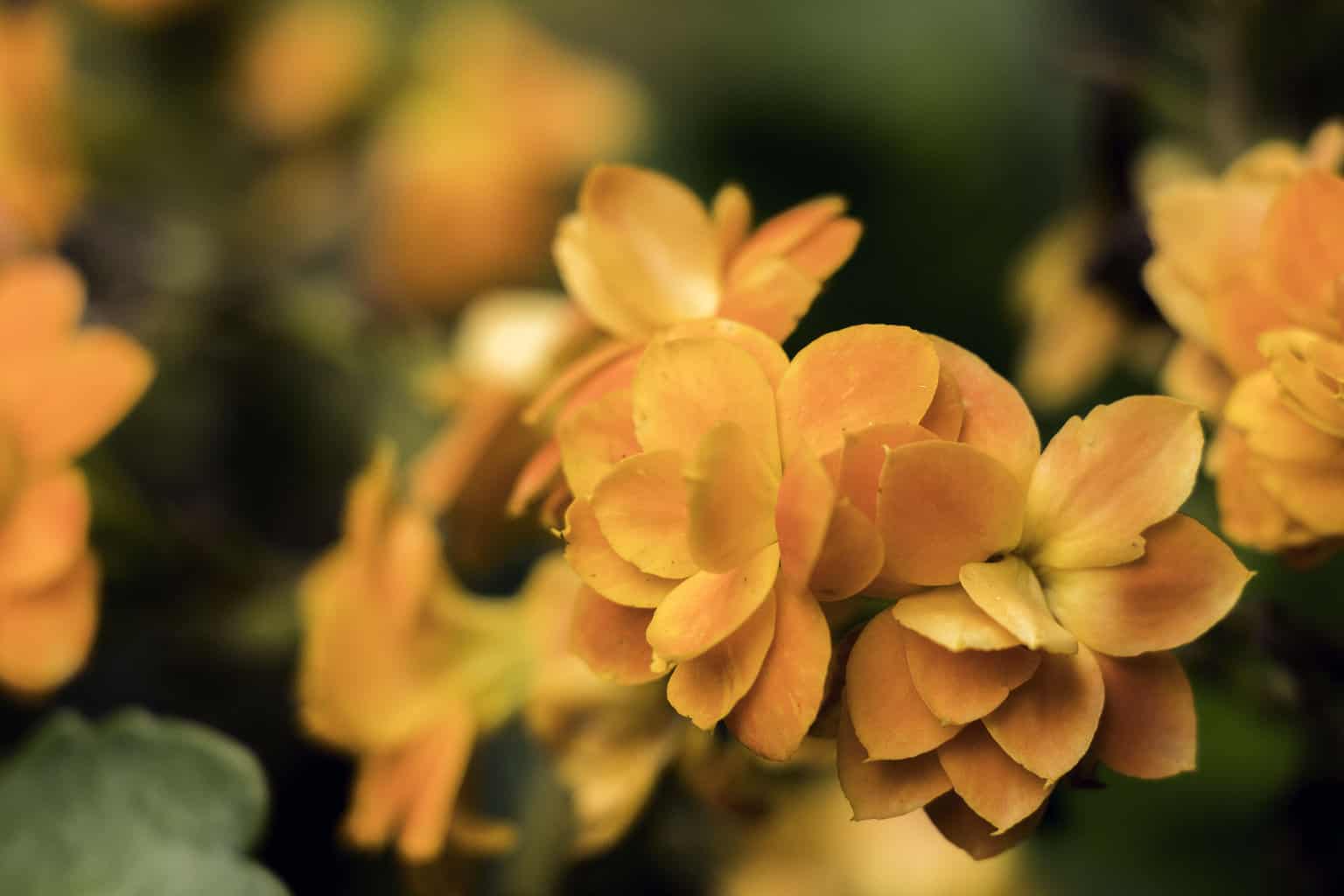
The variety develops double flowers that make them eye-catching, and you find them available in every color with orange, white, yellow, to pink flowers.
Tom Thumb

As the name suggests, this variety is smaller than other Kalanchoe plants reaching about 5.9 inches with red blooms.
Orange Triumph

The succulent plants grow vibrant orange flowers.
Common Flaming Katy Problems
First, you have root rot from overwatering, leaving your plant with soggy soil. Some signs are pale yellow leaves with the base of your plant turning black. The following disease is powdery mildew, another fungal infection from excessively high temperatures and humidity.
With poor ventilation, these fluffy white patches emerge from the foliage. The best is to provide your Flaming Katy with enough air circulation. You can remove the disease using a neem oil spray.
Where to Buy Flaming Katy Plant?
The fantastic thing is the Katy plant is not rare, and you can find different varieties sold at a local garden center. Yet, even better, you need not go far as Plantly can help you to find the right Flaming Katy plants here
Whether you want to buy, sell or simply reach out to other plant enthusiasts, Plantly is the right place to be!
In stock In stock In stock In stock
$9.99
Sold By:
Succulent Oasis
Medium Succulent Plant – Crassula Perforata String of Buttons
Only 36 available and it’s in 2 people’s basket Rated 4.84 out of 5 based on 352 customer ratings01
Sold By:
Succulent Oasis
$14.99
Sold By:
BubbleBlooms
Blue Columnar Cactus, Pilosocereus pachycladus Cacti, Column cactus, tall blue torch cactus, in 2 inch square pot
Rated 4.81 out of 5 based on 279 customer ratings00
Sold By:
BubbleBlooms
$70.00
Sold By:
Andy Nursery
$75.00Red Finger Lime Grafted Citrus Tree. 2 Feet Tall.
Only 47 available and it’s in 1 people’s basket
Sold By:
Andy Nursery
$19.99
Sold By:
Cacti and Exotica
Senecio radicans | String of bananas | 6″ Pot
Rated 4.98 out of 5 based on 59 customer ratings00
Sold By:
Cacti and Exotica

